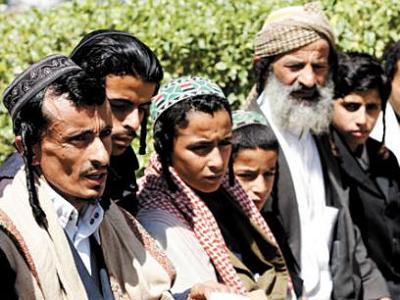


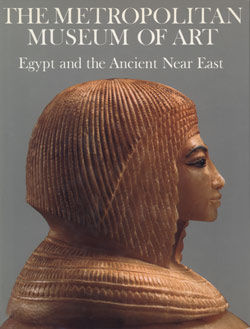


Israel: 70 Years Later (Part One)
For thousands of years, human beings have inhabited the land of Israel. It has a history and culture stepped in religious significance. Judaism, Christianity, Islam, Druze, the Baha’i faith, etc. all have a relationship in Israel’s lands. Also, it’s an area with a contentious, sometimes violent history. In my view, Israel has the most debated history of every place that I have researched in my life. Tons of Jewish people live in Israel now. From Sephardi, Yemeni, Lemba, and the Ashkenazi Jewish ethnic groups, Israel today is composed mostly of Jewish citizens. To learn about Israel is to learn about empires, religions, wars, Judaism, and an experience filled with ups and downs. It is part of the world history from the Balfour Declaration to the Oslo Accords. To be precisely fair, a comprehensive history must be shown. That means that the nation of Israel must be shown and the Palestinian human rights movement must be outlined as well. There is the war on terror which has existed since 2001. With the war on terrors, crisis in the Middle East has continued from the Iraq War to the Syrian civil war crisis. Now, after 70 years since the nation of Israel was established, it is time precisely to show the thousands of years of the historical and cultural development of that region. Therefore, the issues of the refugees, occupation, the Crusades, the BDS movement, nuclear weapons, and 1948 will be shown here in this work.
Certainly, President Trump wants Jerusalem to be the city of the permanent U.S. Embassy in Israel. The issue with this policy is that both Israelis and Palestinians haven't negotiated fully about the issue of Jerusalem. Jerusalem is a city special to us. It's a city with great religious history and spiritual significance. Many people have criticized Trump from EU factions to others. Another issue is that we have to see what will result in this policy. Trump is allied with the Gulf States (and they fight ISIS forces) while many of these Gulf States are pro-Palestinian. The question is whether the Sunni Gulf States will look the other way. The Middle East has been explosive for generations. Many Palestinians want East Jerusalem to be a future capital of a Palestinian state and many Israelis want Jerusalem to be the total capital of Israel. Trump's policy has existed without a status agreement among both sides. After the 1948 war, Israel got Jerusalem except for East Jerusalem, which was annexed by Jordan. Israel occupied East Jerusalem after the 1967 Six Day War. To this day, the international community doesn't recognize Jerusalem as Israel's capital. Once again, violence comes in the Middle East as a product of Trump's reckless policies. The Palestinians want their equality and freedom from Ramallah and Gaza. Therefore, we are in support of any Jewish person and Arabic person in that region who desires true peace, an end to occupation, and true fairness in that region. The history of Israel and Palestine is complicated.
Out of all of the histories that I have studied, the histories of Israel and Palestine receive some of the most passionate responses among both points of view. That is why I advise anyone to study both points of view of the Israeli/Palestinian conflict (and make up their own minds as independently thinking human beings). We all agree that the long term solution is for Israelis and Palestinians to have equality, peace, and justice excluding terrorism and excluding occupation. You can't have freedom with occupation. It's as simple as that. We want Israelis and Palestinians to live in peace filled with justice and equality. The only way to do that is to respect the humanities of both Palestinians and Israelis, while condemning any form of oppression plus injustice (no matter who does it) at the same time. For example, terrorists who kill innocent Israelis should be condemned along with a militarized occupation of the West Bank and Gaza too (which is wrong as well). Not to mention that Ethiopian Jewish people still experience racism, police brutality, and discrimination in Israel. That is wrong too. I dreamed of writing about this issue (on this time) for a long time. Now, I’m blessed enough to do it at the age of 34 years old (or 70 years after 1948).

In the Beginning
In the beginning, human beings traveled from Africa into the Levant (or territory encompassing Israel). Researchers have found early humans in Israel dating to 1.5 million years ago in Ubeidiya near the Sea of Galilee. Yiron is a place where flint tool artifacts were found. About 1.4 million years ago, there were groups of people found in Gesher Not Yaakov, the Bizat Ruhama group, and the Old Acheulean industry. Many scholars have found early human remains and remains of Neanderthal remains in the Carmel mountain range at el-Tabun and Es Skhul. The Paleolithic period had caves like Qesem and Manot. In ca. 10,000 B.C., Israel had the Natufian culture. It included caves and the Nautifian peoples founded the location of Jericho, which could be the oldest city in the world. It cultivated cereals like rye. They may be the ancestors of the builders of the first Neolithic settlements of the region. Neolithic is ta term that refers to the New Stone Age. It is characterized by advancing farming and usage of domesticated animals by human beings.

Ancient Times
By the 2nd millennium B.C, Canaan was (or the territory of Israel back then) was dominated by the New Kingdom of Egypt from ca. 1550 B.C. to 1180 B.C. The Hebrews came about in the region of the Levant during the Bronze Age. They were originally a Semitic, nomadic people. Some scholars believe that the Egyptian term of the Shasu refer to the ancient Hebrews. Some link the YHWH to the Shasu too. Many scholars reject the view that the Hyksos are the ancestors of the Hebrews since they constituted a different group of people. The first recorded name of Israel has been found on the Merneptah stele. It was erected for the Egyptian Pharaoh Merneptah (or the son of Ramses II) on ca. 1209 B.C. It mentioned that “Israel is laid waste and his seed is not.” The word ysrỉꜣr is used for Israel in the script. William G. Dever is a researcher who believes that “Israel” in the central highlands as a cultural and probably a political entity, more an ethnic group rather than an organized state. The ancestors of the ancient Israelites included Semites in Canaan and possibly the Sea Peoples. McNutt says, "It is probably safe to assume that sometime during Iron Age I a population began to identify itself as 'Israelite'", differentiating itself from the Canaanites through such markers as the prohibition of intermarriage, an emphasis on family history and genealogy, and religion. The modern alphabet that we used today came from the Levant region of the Middle East thousands of years ago. Many researchers believe that the use of grapheme based writing originated in the area (among probably among Canaanite peoples resident in Egypt).
All modern alphabetical writing system came from this writing. Usage of Classical Hebrew existed from ca. 1,000 B.C. It was written using the Paleo-Hebrew alphabet. Back then, villages have populations of up to 300 to 400 people. These places had farming and herding. Many of them were self-sufficient. Economic interchange flourished. Writing was found back then for recording even in small sites. Archaeological evidence has shown a society of village like centers with more limited resources and a small population.
Later, the era of Israel and Judah existed. The Hebrew Bible is explicit about the warfare among Jewish people and other peoples like the Philistines (whose capital was in Gaza). The Bible stated that King David created and founded a dynasty of kings (and his son built the Temple). Yigael Yadin’s excavations at Hazor, Megiddo, Beit Shean, and Gezer discovered structures that he and others have argued date from his reign. Others like Israel Finkelstein and Neil Silberman (who agree that Solomon was a historical king), argue that they should be dated to the Omride period, more than a century after Solomon. The earliest references to the “House of David” were found at two sites. One was the Tel Dan Stele and the other was the Mesha Stele, which described an 840 B.C. Judean invasion of Moab. David and Solomon are mentioned in Jewish, Christian, and Islamic texts. At ca. 930, B.C., after the death of Solomon, the kingdom of Israel was split into a southern Kingdom of Judah and a northern Kingdom of Israel. The Bible's Books of Kings states that soon after the split Pharaoh "Shishaq" invaded the country, plundering Jerusalem. An inscription over a gate at Karnak in Egypt recounts such an invasion by Pharaoh Sheshonq I.
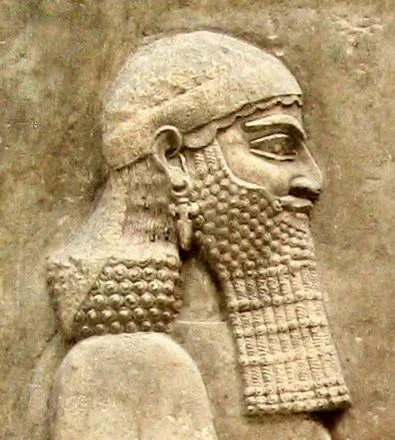
This is an image of Sennacherib.
It is possible that an alliance between Ahab of Israel and Ben Hadad II of Aram Damascus managed to repulse the incursions of the Assyrians (with the victory of the Battle of Qarqar in 854 B.C.). Later, the Kingdom of Israel was eventually destroyed by the Assyrian King Tiglath-Pileser III in ca. 750 B.C. The Philistine Kingdom was also destroyed. The Assyrians sent most of the northern Israelite kingdom into exile (thus, creating the Lost Tribes of Israel. The Samaritans claimed to be descended from the survivors of the Assyrian conquest). There was an Israelite revolt (in 724-722 B.C.). It was crushed after the siege and capture of Samaria by the Assyrian king Sargon II. Sargon’s son, Sennacherib tried and failed to conquer Judah. The Assyrian records said that he leveled 46 walled cities and besieged Jerusalem, leaving after receiving extensive tribute. Modern scholars believe that the refugees from the destruction of Israel moved to Judah during the rule of King Hezekiah (he was a ruler form 715-686 B.C.). This caused an expansion of Jerusalem and caused the construction of the Siloam Tunnel, which provided water during a siege. The refugees also brought new religious ideas which led under King Josiah (who ruled from 641-619 B.C.) to the organization of the modern books of Deuteronomy, Joshua and to the accounts of the kingship of David and Solomon in the book of Kings. The books are known as Deuteronomist and considered to be a major key step in the emergence of Monotheism in Judah. They were written at a time when Assyria was weakened by the emergence of Babylon and may be a committing to text of more ancient verbal traditions.

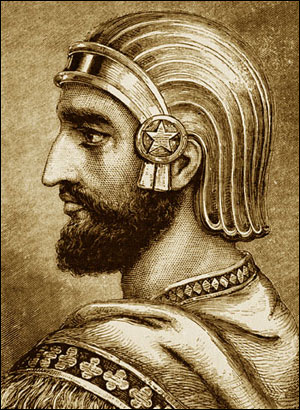
The Rule of Empires
Israel (from 586 to 135 B.C.) was dominated by Babylonian, Persian, Ptolemaic, and Seleucid empires. In 586 B.C., King Nebuchadnezzar II of Babylon conquered Judah. According to the Hebrew Bible, he destroyed Solomon’s Temple and exiled the Jewish people to Babylon. The Babylonians recorded the defeat. Babylonian and Biblical sources said that the Judean King Jehoiachin switched allegiances between the Egyptians and the Babylonians. They mentioned that the Babylonians invaded Israel as punishment for Israel allying with Babylon’s principal rival, Egypt. The exiled Jewish people may have been restricted to the elite. Jehoiachin was later released by the Babylonians according to the Jehoiachin’s Rations Tablets. According to the Bible and the Talmud, the Judean royal family (from the Davidic line) continued as head of the exile in Babylon. In 538 B.C., Cyrus the Great of Persia conquered Babylon and took over its empire.
Cyrus issued a proclamation granting subjugated nations (including the people of Judah) religious freedom (as found in the Cyrus Cylinder). According to the Hebrew Bible, 50,000 Judeans, led by Zerubbabel, returned to Judah and rebuilt the temple. A second group of 5,000, who were led by Ezra and Nehemiah, returned to Judah in 456 B.C. Although, non-Jewish people wrote to Cyrus to try to prevent their return, the Jewish people came back to Israel. Modern scholars believe that the final Hebrew versions of the Torah and the Book of Kings date from this period. The returning Israelites adopted an Aramaic script (or the Ashuri alphabet), which they brought back from Babylon. This is the current Hebrew script. The Hebrew calendar resembles closely the Babylonian calendar and probably dates from this period.
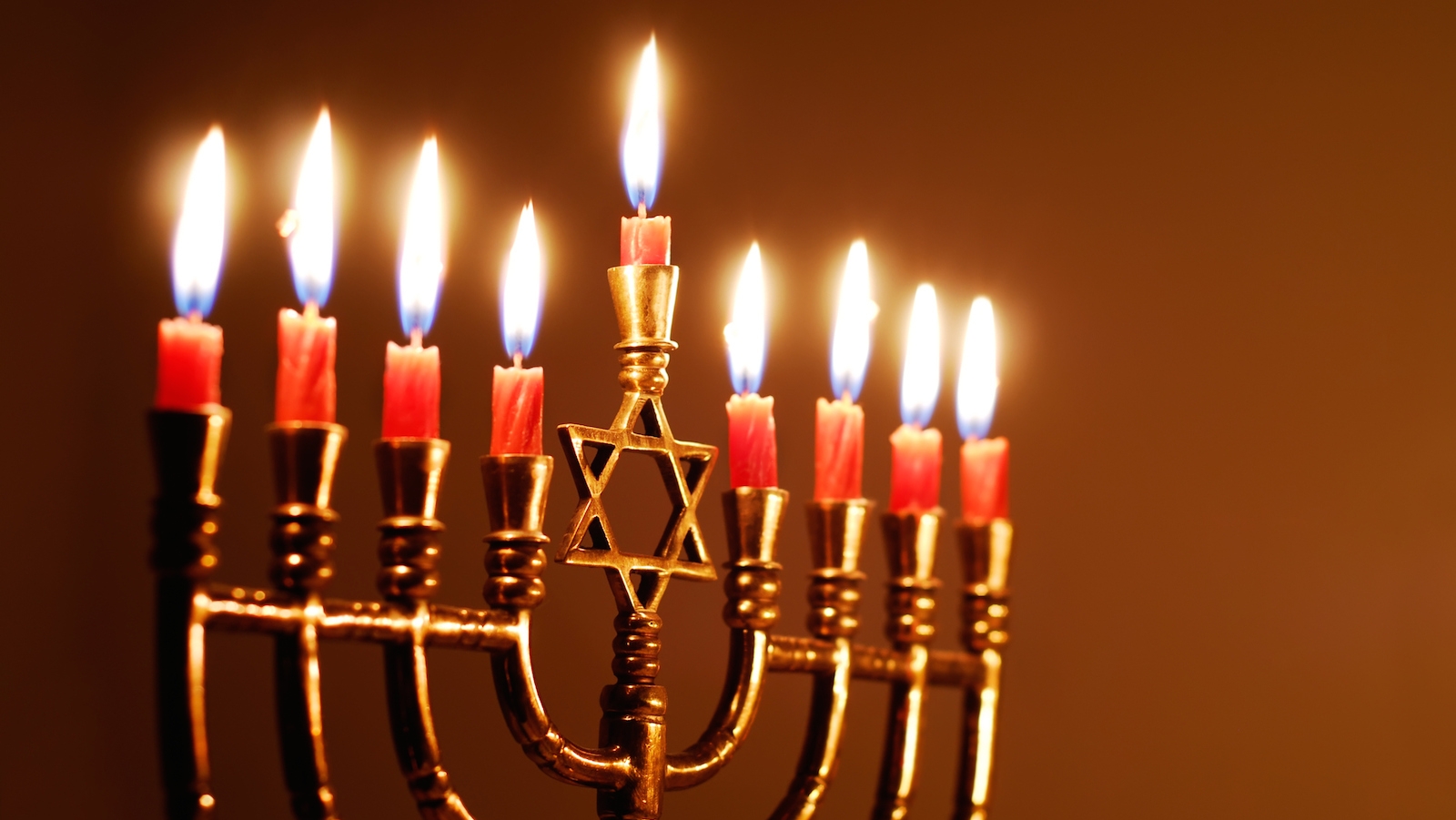
In 333 B.C, the Macedonian ruler Alexander the Great defeated Persia and conquered the region. Afterwards, the first translation of the Hebrew Bible existed or the Septuagint. It started to develop in Alexandria. The city of Alexandria in Egypt would be a city where many ancient Jewish people would live at. After Alexander’s death, his generals fought over territories that he had conquered. Judah was the frontier between the Seleucid Empire and the Ptolemaic Egypt, which eventually became part of the Seleucid Empire in 200 B.C. at the Battle of Panium. By the 2nd century B.C., Seleucid ruler Antiochus VI Epiphanes tried to eradicate Judaism in favor of the Hellenistic religion. This provoked the 174-135 B.C. Maccabean Revolt led by Judas Maccabeus (whose victory is celebrated in the Jewish festival of Hanukkah). This is why Hanukkah is celebrated worldwide. It's a remembrance of Jewish people thousands of years defeating imperialists and fighting oppression. The Books of Maccabees describe the uprising and the end of the Greek rule. A Jewish party called the Hasideans opposed both Hellenism and the revolt but eventually gave their support to the Maccabees. Modern scholars interpreted this period as a civil war between Hellenized and orthodox forms of Judaism.

The Hasmonean dynasty
The Hasomenan dynasty lasted from 135 B.C. to 47 B.C. in Israel. It was made up of Jewish priest kings ruling Judea with the Pharisees, Sadducees, and Essenes as the principal Jewish social movements. The Pharisees was a social movement that used its views of theocracy to form the basis for Rabbinic Judaism. The Pharisees favored Oral Law, the resurrection, and believed in spirits or angels. Pharisees rejected Hellenization while the Sadducees endorsed Hellenization. The Sadducees according to Josephus was made up of the upper social and economic echelon of Judean society. They maintained the Temple. They favored the written Torah instead of oral law, they believed in free will, they believe that there is no afterlife (to them, there are no spirits or angels), there are no rewards or penalties after death, and there is no fate (they believed in the Sheol for those who had died).
The Essenes were small, but they followed the communal life in asceticism. Many of them had mystic, eschatological, and messianic views. They lived in urban areas. Some believe that they wrote the Dead Sea Scrolls (though, this is disputed). The Essences lived like monks in collective ownership, they didn’t swear oaths, they didn’t sacrifice animals, and they worked on living a pure life. They believed in the immortality of the soul. They used water purification rituals. So, the Pharisee leader Simeon ben Shetach formed the first schools based around meeting house. This led into Rabbinical Judaism. Justice was administrated by the Sanhedrin, which was a Rabbinical assembly and law court whose leader was known as the Nasi. The Nasi’s religious authority gradually superseded that of the Temple’s high priest (under the Hasmoneans). The Hasmoneans extended their control over much of the region. In 125 B.C., the Hasmonean enthnarch John Hyrcanus subjugated Edom and forcibly converted the population to Judaism.


The Roman Empire
Roman rule came upon Israel for a long time from 64 B.C. to 390 A.D. By 64 B.C., the Roman general Pompey conquered Syria and intervened in the Hasmonean civil war in Jerusalem. By the time of the siege of Alexandria in 47 B.C., the lives of Julius Caesar and his protégé Cleopatra were saved by 3,000 Jewish troops sent by King Hyrcanus II (and commanded by Antipater, whose descendants Caesar made kings of Judea). The Herodian dynasty ruled Judea from 37 B.C. to 6 A.D. They were made up of Jewish-Roman client kings who descended from Atipater. Herod the Great greatly enlarged the temple. It was one of the largest religious structures in the world during the time. During this time, Rabbinical Judaism, led by Hillel the Elder started to have popular prominence over the Temple priesthood. The Jewish Temple in Jerusalem was granted special permission not to display an effigy of the emperor. It was the only religious structure in the Roman Empire that didn’t do so. There was special dispensation for Jewish citizens of the Roman Empire to pay a tax to the temple. By 6 A.D., Judea was made a Roman province. Over the decades, the society of Judea had prosperity in many areas and it experienced tensions among Greco-Roman and Judean populations.
The Lord Jesus Christ was born during the last years of Herod’s rule. He was born (according to the New Testament) in the Judean city of Bethlehem. He was more than a Galilean Jewish reformer and a rabbi who loved Nazareth. He inspired the poor to fight for their rights. He refuted the religious hypocrites who were Pharisees and Sadducees. He angered the political establishment of Rome with his words from the Sermon on the Mount and his actions (like helping the sick and defending the rights of the oppressed). His followers were called the apostles. Jesus Christ was executed in Jerusalem on the orders of the Roman governor Pontius Pilate between 25 and 35 A.D. The Twelve Apostles (who were all Jewish people including Paul the Apostle) grew in influence to promote the new religion of Christianity. They defined Jesus Christ as the Son of the living God and the Messiah.
By 50 A.D., the Council of Jerusalem was led by Paul. He decided to abandon the Jewish requirement of circumcision for Gentiles and he made the Torah laws in total to not be required by Gentiles to follow every aspect of it. This caused Gentiles to have more access to the new religion, which was a cousin to Judaism as Christianity has Jewish roots. Peter, another Jewish follower of Jesus, spread the Gospel in Israel and throughout Europe. By 64 A.D., the Temple High Priest Joshua ben Gamala introduced a religious requirement for Jewish boys to learn to read from the age of six. Over the next few hundred years this requirement became steadily more ingrained in Jewish tradition. There were famous Jewish-Roman wars too. In 66 A.D, Jewish people of Judea revolted against Rome. They named their new state Israel. The Jewish leader and historian Josephus described the events from the defense of Jotapata, the siege of Jerusalem (69-70 A.D.) and the desperate last stand at Masada under Eleazar ben Yair (72-73 A.D.). Josephus estimated that over a million people died in the siege of Jerusalem. The Temple and most of Jerusalem were destroyed. During the Jewish revolt, most Christians, at this time a close organization that came from Judaism, removed themselves from Judea. The rabbinical/Pharisee movement led by Yochanan ben Zakai, who opposed the Sadducee temple priesthood, made peace with Rome and survived. After the war, Jewish people continued to be taxed in the Fiscus Judaicus, which was used to fund a temple to Jupiter. A victory arch erected in Rome can still be seen today.

There were more tensions and attacks on Jewish people around the Roman Empire. This led to the massive Jewish uprising against Rome from 115 to 117 A.D. Jewish people in Libya, Egypt, Cyprus, and Mesopotamia fought against Rome. This conflict was accompanied by the large scale massacres of both sides. Cyprus was so severely depopulated that new settlers were imported and Jewish people were banned from living there. In 131, the Emperor Hadrian renamed Jerusalem “Aelia Capitolina” and formed a Temple of Jupiter on the site of the former Jewish temple. To Jewish people, this is the utmost in disrespect since Judaism rejects paganism in powerful terms. Jewish people were banned from living in Jerusalem itself (a ban that persisted until the Arabic conquest of the area). The Roman leaders named the province in Israel as from Iudaea Province to Palaestina. The names of “Palestine” in English and “Filistin” in Arabic are derived from this name of Palaestina.
From 132 to 136, the historic Jewish leader Simon Bar Kokhba led another major revolt against the Romans. He renamed the country as Israel. The Bar-Kochba revolt caused more trouble for the Romans than the revolt of 70 A.D. Many Christians refused to participate in the revolt and this was the age when many Jewish people considered Christianity as a separate religion. The revolt was later crushed by Emperor Hadrian himself. During the Bar Kokhba revolt, a rabbinical assembly decided which books could be regarded as part of the Hebrew Bible. They excluded the Jewish apocrypha and Christian books. As a result of this, the original texts of some Hebrew texts like the Books of Maccabees were lost (Greek translations survived). A rabbi of this time named Simeon bar Yochai is said to be the author of the Zohar. The Zohar is the foundational text for Kabbalistic thought. Yet, modern scholars believe that it was written in Medieval Spain.
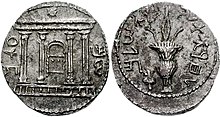

After the Bar Kochba revolt was suppressed by the Romans, the Romans exiled the Jewish people of Judea, but not of Galilee. They permitted a hereditary Rabbinical Patriarch (from the House of Hillel, based in Galilee) to represent the Jewish people in dealing with the Romans. The most famous of the Rabbinical Patriarch leaders was Judah haNasi. He was credited with compiling the final version of the Mishnah (which is a massive body of Jewish religious texts that interpret the Bible). He strengthened the educational demands of Judaism by requiring that illiterate Jewish people to be treated as outcasts, which was a big mistake. As a result, many illiterate Jewish people may have converted to Christianity. Jewish seminaries like those at Shefaram and Bet Shearim continued to produce scholars and the best of these became members of the Sanhedrin. It or the Sanhedrin was located at Tzippori at first and later at Tiberias. Before the Bar-Kochba uprising, an estimated 2/3 of the population of Galilee and 1/3 of the coastal region were Jewish. In Galilee, many synagogues were dated from this period. However, persecution and the economic crisis that affected the Roman Empire in the 3rd century led to further Jewish migration from Syria Palaestina to the more tolerant Sassanid Empire. In that empire, a prosperous Jewish community with extensive seminaries existed in the area of Babylon.
Early in the 4th century, the Emperor Constantine made Constantinople the capital of the East Roman Empire and made Christianity the official religion. His mother, Helena made a pilgrimage to Jerusalem (326-328) and led the construction of the Church of the Nativity (Bethlehem), the Church of the Holy Sepulchre (Jerusalem) and other key churches that still exist. The name Jerusalem was restored to Aelia Capitolina and it became a Christian city. Jewish people were still banned from living in Jerusalem, but were allowed to visit, and it is in this period that the surviving Western Wall of the temple became sacred to Judaism. In 351–2, another Jewish revolt in the Galilee erupted against a corrupt Roman governor. In 362, the last pagan Roman Emperor, Julian the Apostate, announced plans to rebuild the Jewish Temple. He died while fighting the Persians in 363 and the project was discontinued.
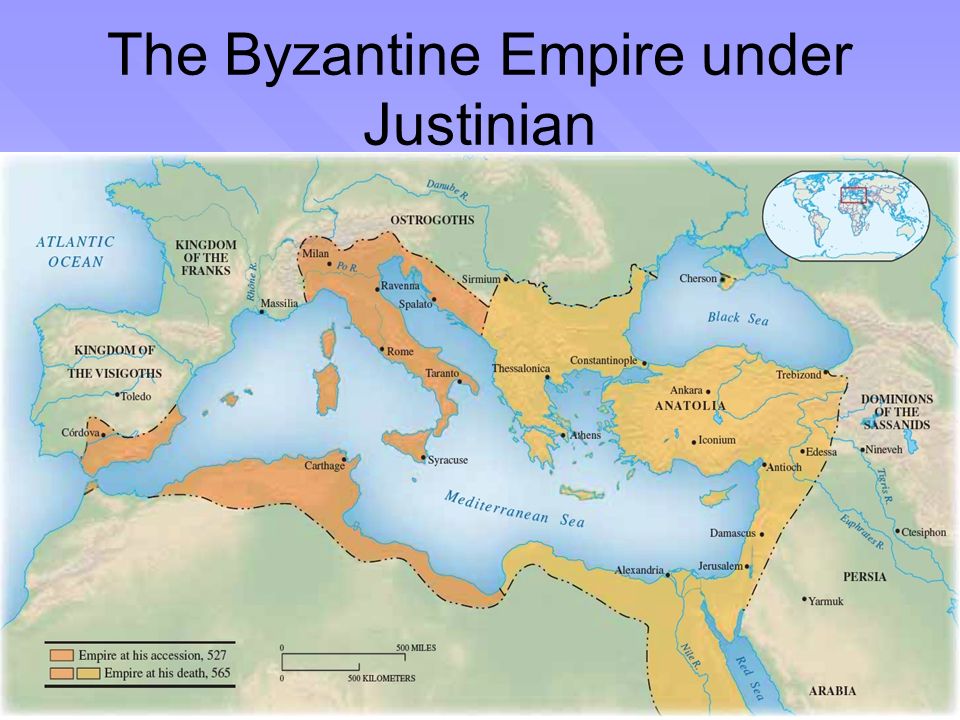
Byzantine rule
The Byzantine Empire was involved with Israel from 390 to 690 A.D. the Roman Empire was split by 390 A.D. into a Western and Eastern sections. Israel was found in the Christian East Roman Empire or the Byzantine Empire. Byzantine Christianity was mostly related to the (Greek) Eastern Orthodox Church. It had massive land ownership back then and today. By the 5th century, the Western Empire collapsed. Many Christians migrated into the Roman province of Palaestina Prima. There was a development of a Christian majority. Jewish people numbered 10-15% of the population. They lived mostly in Galilee. Judaism was the only non-Christian religion tolerated. Yet, there were restriction on Jewish people. It slowly increased. There was a ban on building new places of worship, holding public office, and owning slaves. Slavery is completely wrong and evil. In 425 A.D. (after the death of the last Nasi, whose name was Gamliel VI), the Sanhedrin was officially abolished the title of Nasi was banned. Many Samaritan Revolts came about during this period. This caused the decrease of the Samaritan community from about a million to near extinction. Sacred Jewish texts were written in Palestine during this time including the Gamara (in 400), the Jerusalem Talmud (in 500), and the Passover Haggadah.
In 611, Sassanid Persia invaded the Byzantine Empire. After a long siege, Khosrau II captured Jerusalem in 614 with Jewish help (including possibly the Jewish Himyarite Kingdom in Yemen). Jewish people were left to govern Jerusalem when the Persians took over. The Byzantine Empire Heraclius promised to restore Jewish rights and received Jewish help in defeating the Persians. Yet, he lied and soon reneged on the agreement after reconquering Palaestina Prima. He massacred the Jewish people of Palestine. He issued an edict banning Judaism from the Byzantine Empire. The Egyptian Coptic Christians took responsibility for the broken pledge and fasted in penance.

Islam and the Caliphates in Israel
The Muslim Caliphates ruled Israel from 634 to 1099. Muslim tradition said that in 620, Muhammad was taken on a spiritual journey from Mecca to the “Farthest mosque.” This location is considered the Temple Mount and returning the same night. In 634 to 636, Arabic people conquered Palaestina Prima. They renamed it Jund Filastin. They ended the Byzantine ban on Jewish people living in Jerusalem. Over the next few centuries, Islam replaced Christianity as the dominant religion of the region. From 636 until the beginning of the Crusades, Jund Filastin was ruled first by the Medinah based Rashidun Caliphs and then by the Damascus-based Umayyad Caliphate. Later, it was ruled by the Baghdad based Abbasid Caliphs. In 691, Umayyad Caliph Abd al-Malik (685–705) constructed the Dome of the Rock shrine on the Temple Mount. Jewish people consider it to contain the Foundation Stone (see also Holy of Holies), which is the holiest site in Judaism. A second building, the Al-Aqsa Mosque, was also erected on the Temple Mount in 705. Between the 7th and 11th centuries, Jewish scribes, called the Masoretes and located in Galilee and Jerusalem, established the Masoretic Text, the final text of the Hebrew Bible.


The man to the right is of course Saladin.
The Crusades
The Crusades happened from 1099 to 1291. In 1099 A.D., the first crusade occurred. European Catholic forces took Jerusalem and formed a Catholic kingdom. It was known as the Kingdom of Jerusalem. During the conquest, both Muslims and Jewish people were indiscriminately massacred or sold into slavery. The murder of Jewish people by European Catholics started as the Crusaders traveled across Europe and continued when they reached the Holy Land. Ashkenazi orthodox Jewish people still recite a prayer in memory of the death and destruction caused by the Crusaders. In 1187, the Ayyubid Sultan Saladin defeated the Crusades in the Battle of Hattlin (above Tiberias). Saladin took Jerusalem and most of the former Kingdom of Jerusalem. Saladin’s court physician was Maimonides, who was buried in Tiberias. A Crusader state centered around Acre. It survived in a weakened form for another century. From 1260 to 1291 the area became the frontier between Mongol invaders (occasional Crusader allies) and the Mamluks of Egypt. The conflict impoverished the country and severely reduced the population. Sultan Qutuz of Egypt eventually defeated the Mongols in the Battle of Ain Jalut (near Ein Harod), and his successors eliminated the Crusader states. The fall of the last one, the Kingdom of Acre, in 1291 ended the Crusades period in the region.

Mamuluk rule
The Mamluks ruled Israel from 1291 to 1517. The Egyptian Mamluk Sultan named Baibars (1260-1277) conquered the region and the Mumluks ruled it until 1517. They viewed it as part of Syria. In Hebron, Baibars banned Jewish people from worshiping at the Cave of the Patriarchs (the second holiest site in Judaism). The ban remained in place until its conquest by Israel in about 700 years later. The Mamluks continued the policy of the Ayyubids. They made the strategic decision to destroy the coastal area and to bring desolation to many cities from Tyre in the north to Gaza in the south. Ports were destroyed and various materials were dumped to make them inoperable. The goal was to prevent attacks from the sea. They fear the return of the Crusaders. This had a long term effect on those areas. It caused them to be sparsely populated for centuries. The activity in that time concentrated more inland. The Crusades collapsed. Later, there was increased persecution and expulsions of Jewish people in Europe.
There were expulsions in England by 1290 and this was followed by France in 1306. In Spain, persecution was highly integrated and successful Jewish communities started. Many of the Spanish massacred Jewish people and made forced conversions. During the Black Death, many Jewish people were murdered after being falsely collectively accused of poisoning wells. The completion of the Catholic reconquest of Spain led to the expulsion of Jewish people from Spain in 1492 and Portugal in 1497. These were some of the wealthiest and most integrated Jewish communities in Europe. Many Jewish people converted to Christianity and many also secretly practiced Judaism. Prejudice against converts to Catholicism persisted. This caused many former Judaism adherents to travel into the New World. Most of the expelled Jewish people traveled into North Africa, Poland, the Ottoman Empire, and to the region of Bilad a-Sham, which roughly corresponds to the ancient Kingdom of Israel (united monarchy). In Italy, Jewish people in the Papal States were required to live in ghettos (which relates to the Cum nimis absurdum). The last compulsory Ghetto, in Rome, was abolished in the 1880’s.

The Ottoman Empire
The Ottoman Empire ruled Israel from 1517 to 1920. The Mamluks ruled an area of the province of Bilad a-Sham (Syria). It was conquered by the Turkish Sultan Selim I in 1516-1517. It became part of the province of Ottoman Syria for the next four centuries, first as the Damascus Eyalet and later as the Syria Vilayet (following the Tanzimat reorganization of 1864). Between 1535 and 1538, Suleiman the Magnificent (or a Turkish leader) built the current Walls of Jerusalem. Jerusalem had been without walls since the ancient Roman times. The construction followed the historic area of the city but left out one section which had previously been within the walls, which is now known as Silwan. From the Middle Ages on, there was small scale individual Jewish migration to the Land of Israel, which tended to increase when persecution was bad elsewhere. The Jewish population was concentrated in Jerusalem, Hebron, Safed, and Tiberias, known in Jewish tradition as the Four Holy Cities. During the 16th century, following a wave of Spanish immigration, Safed became a center for study of the Kabbalah. However economic decline and conflict between the Druze and the Ottomans, led to the community's gradual decline by the mid-17th century. In 1660, a Druze revolt led to the destruction of the major Old Yishuv cities of Safed and Tiberias. In 1663 Sabbatai Zevi settled in Jerusalem, proclaiming himself to be the Jewish Messiah, which he wasn’t. He was false prophet and false Messiah. He acquired a large number of followers before going to Istanbul in 1666, where the Sultan forced him to convert to Islam. In the late 18th century a local Arabic sheikh Zahir al-Umar created a de facto independent Emirate in the Galilee. Ottoman attempts to subdue the Sheikh failed, but after Zahir's death the Ottomans restored their rule in the area.
In 1799, Napoleon briefly occupied Israel and planned a proclamation inviting Jewish people to create a state. The proclamation was shelved following his defeat at Acre. In 1831, Muhammad Ali of Egypt conquered Ottoman Syria and decided to revive and resettle much of its regions. His conscription policies led to a popular Arabic revolt in 1834. Many causalities for the local Arabic peasants existed. There were massacres of Christian and Jewish communities by the rebels. After the revolt, Muhammad Pasha, the son of Muhammad Ali, expelled nearly 10,000 of the local peasants to Egypt, while bringing loyal Arabic peasants from Egypt and discharged soldiers to settle the coastline of Ottoman Syria. Northern Jordan Valley was settled by his Sudanese troops. In 1838, there was another revolt by the Druze. In 1839, Moses Montefiore met with Muhammed Pasha in Egypt and signed an agreement to establish 100-200 Jewish villages in the Damascus Eyalet of Ottoman Syria, but in 1840, the Egyptians withdrew before the deal was implemented, returning the area to Ottoman governorship. In 1844, Jewish people constituted the largest population group in Jerusalem and by 1890 an absolute majority in the city, but as a whole the Jewish population made up far less than 10% of the country. In 1868, the Ottomans banished the Bahá'u'lláh, one of the founders of the Bahá'í Faith, to Acre where he is buried, and the movement subsequently established its global administrative center in nearby Haifa. In 1874, Ottoman reforms led to the area of Jerusalem gaining special status as the Mutasarrifate of Jerusalem.
During the 19th century, Jewish people in Western Europe were increasingly granted citizenship and equality before the law. Yet, in Eastern Europe, they faced increased persecution and legal restrictions including pogroms. Half of the world’s Jewish people lived in the Russian Empire. In that area, they were regarded by the authorities as a separate national group and restricted to living in the Pale of Settlement. National groups in the Empire (like the Poles, Lithuanians, and Ukrainians) were agitating for independence and regarded the Jewish people as “aliens.” They or the Jewish people were usually the only non-Christian minority and they spoke a distinct language called Yiddish.
An independent Jewish national movement first began to emerge in the Russian Empire and the millions of Jewish people who were fleeing the country (mostly to the USA) carried the seeds of this nationalism wherever they went. In 1870, an agricultural school, called the Mikveh Israel, was founded near Jaffa by the Alliance Israelite Universelle (which was a French Jewish association). In 1878, Russian Jewish emigrants established the village of Petah Tikva, followed by Rishon LeZion in 1882. Russian Jewish people established the Bilu and the Hovevei Zion (“Love of Zion”) movements to assist settlers and these created additional communities. These communities (unlike the traditional Ashkenazi-Jewish communities) sought to be self-reliant rather than dependent on donations from abroad. Existing Ashkenazi Jewish communities were found in the Four Holy Cities. They were very poor and tended to live on donations from Europe. The new migrants avoided these communities and tended to create small agricultural settlements. In Jaffa, a vibrant commercial community developed in which Ashkenazi and Sephardi Jewish peoples intermingled. Many early migrants left due to the difficulty in finding work and the early settlements often remained dependent on foreign donations. Despite the difficulties, more settlements arose and the community continued to grow.


The new migration was accompanied with the revival of the Hebrew language. That attracted Jewish people of all kinds. Many religious, secular, nationalist, and left wing socialists came into Israel. Socialists wanted to reclaim the land by becoming peasants or workers. They formed collectives. In Zionist history, the different waves of Jewish settlement in Israel are called “Aliyah.” During the First Aliyah, between 1882 and 1903, approximately 35,000 Jewish people moved into what is now Israel. The first wave coincided with a wave of Jewish migration and Messianism among Yemenite Jewish people and Bukharan Jewish people. By 1890, Jewish people were a majority in Jerusalem. This come in spite of the country as a whole was populated mainly by Muslims (settled and nomad Bedouins) and Christian Arabic peoples. In 1896 Theodor Herzl published Der Judenstaat (The Jewish State), in which he asserted that the solution to growing antisemitism in Europe (the so-called "Jewish Question") was to establish a Jewish state. In 1897, the Zionist Organization was founded and the First Zionist Congress proclaimed its aim "to establish a home for the Jewish people in Palestine secured under public law." However, Zionism was regarded with suspicion by the Ottoman rulers and was unable to make major progress.
Between 1904 and 1914, around 40,000 Jews settled in the area now known as Israel (the Second Aliyah). In 1908 the Zionist Organization set up the Palestine Bureau (also known as the "Eretz Israel Office") in Jaffa and began to adopt a systematic Jewish settlement policy. Migrants were mainly from Russia (which then included part of Poland), escaping persecution. The first Kibbutz, Degania, was founded by nine Russian socialists in 1909. In 1909 residents of Jaffa established the first entirely Hebrew-speaking city, Ahuzat Bayit (later renamed Tel Aviv). Hebrew newspapers and books were published, Hebrew schools, Jewish political parties and workers organizations were established.
During World War I, most Jewish people supported the Germans. The reason was that they were fighting the Russians and the Jewish people viewed the Russians as their main enemy. In Britain, the government wanted Jewish support for the war effort for many reasons (like an erroneous anti-Semitic perception of “Jewish power” over the Ottoman Empire’s Young Turks movement and a desire to secure American Jewish support for U.S. intervention on Britain’s behalf). There was already sympathy for the aims of Zionism in the British government, including the Prime Minister Lloyd George. In late 1917, the British Army drove the Turks out of Southern Syria, and the British foreign minister, Lord Balfour, sent a public letter to Lord Rothschild, a leading member of his party and leader of the Jewish community. The letter subsequently became known as the Balfour Declaration of 1917. It stated that the British Government "view[ed] with favour the establishment in Palestine of a national home for the Jewish people." The declaration provided the British government with a pretext for claiming and governing the country. New Middle Eastern boundaries were decided by an agreement between British and French bureaucrats. The agreement gave Britain control over what parties would begin to call "Palestine."
A Jewish Legion composed largely of Zionist volunteers organized by Jabotinsky and Trumpeldor participated in the British invasion. It also participated in the failed Gallipoli Campaign. A Zionist spy network provided the British with details of Ottoman troops. It is no secret that the British forces back then wanted to end the Ottoman Empire by any means necessary.

THis map shows the Zones of French, British and Russian influence and control proposed in the Sykes–Picot Agreement agreement from 1916. Green = Russian occupation; Dark blue = French occupation; Light blue = Zone "A", French protectorate; Dark red = British occupation; Light red = Zone "B", British protectorate; Purple = International zones (The early 21st century borders shown for reference).
The era of the British Mandate of Palestine
The British Mandate of Palestine era lasted from 1920 to 1948. The British Mandate was about the British rule of Palestine. It included the Balfour Declaration too. This plan was confirmed by the League of Nations in 1922. It came into effect in 1923. The boundaries of Palestine at first included modern Jordan, which was removed from the territory by Churchill a few years later. Britain signed a treaty with America (which did not join the League of Nations) in which the United States endorsed the terms of the Mandate. Between 1919 and 1923, about 40,000 Jewish people arrived in Palestine. Most of them escaped the post-revolutionary chaos of Russia. This was the Third Aliyah. During this time, over 100,000 Jewish people were massacred in this period in Ukraine and Russia. Many of these immigrants became known as “pioneers” (halutzim) experienced or trained in agriculture and capable of establishing self-sustaining economies. The Jezreel Valley and the Hefer Plain marshes were drained and converted to agricultural use. Land was brought by the Jewish National Fund or a Zionist charity. This charity collected money abroad for the reason of using land. A mainly socialist underground Jewish militia named Haganah (“Defense”) was established to defend outlying Jewish settlements. The French victory over the Arabic Kingdom of Syria and the Balfour Declaration led to the emergence of Palestinian Nationalism and Arabic rioting in 1920 and 1921. In response, the British authorities imposed immigration quotas for Jewish people.
The exceptions were made for Jewish people with over 1,000 pounds in cash (or about 100,000 pounds at the year 2000 rates) or Jewish professionals with over 500 pounds. The Jewish Agency issued the British entry permits and distributed funds donated by Jewish people abroad. Between 1924 and 1929, 82,000 more Jewish people arrived (Fourth Aliyah). They fled antisemitism in Poland and Hungary. The United States Immigration Act of 1924 kept Jewish people out. The new arrivals were made up of many middle class families. They moved into towns and formed small businesses and workshops. Their lack of economic opportunities meant that approximately a quarter later left. The first electricity generator was built in Tel Aviv in 1923 under the guidance of Pinhas Rutenberg, a former Commissar of St Petersburg in Russia's pre-Bolshevik Kerensky Government. In 1925 the Jewish Agency established the Hebrew University in Jerusalem and the Technion (technological university) in Haifa.

By 1928, there was the democratically elected Va’ad Leumi (or the Jewish National Council or JNC). It became the main institution of the Palestine Jewish community ("Yishuv") and included non-Zionist Jewish people. As the Yishuv grew, the JNC adopted more government-type functions, such as education, health care and security. With British permission, the Va'ad raised its own taxes and ran independent services for the Jewish population. From 1929 its leadership was elected by Jews from 26 countries. In 1929 tensions grew over the Kotel (Wailing Wall), a narrow alleyway where Jewish people were banned from using chairs or any furniture (many of the worshipers were elderly). The Mufti claimed it was Muslim property and that the Jewish people were seeking control of the Temple Mount. This (and general animosity) led to the August 1929 Palestine riots. The main victims were the ancient Jewish community at Hebron, which came to an end. The riots led to right-wing Zionists establishing their own militia in 1931, the Irgun Tzvai Leumi (National Military Organization, known in Hebrew by its acronym "Etzel").
Zionist political parties provided private education and health care: the General Zionists, the Mizrahi and the Socialist Zionists, each established independent health and education services and operated sports organizations funded by local taxes, donations and fees (the British administration did not invest in public services). During the whole interwar period, the British, appealing to the terms of the Mandate, rejected the principle of majority rule or any other measure that would give the Arabic population, who formed the majority of the population, control over Palestinian territory.
In 1933, the Jewish Agency and the Nazis negotiated the Ha’avara Agreement (or the treasonous transfer agreement). It was about planning to send 50,000 Jewish people into Palestine. The Jewish people’s possessions were confiscated and in return the Nazis allowed the Ha’avara organization to purchase 14 million pounds worth of German goods for export to Palestine (which was used to compensate the immigration). The Nazis didn’t normally allow Jewish people to leave with any money or take more than 2 suitcases. The agreement was very controversial and the Labour Zionist leader who negotiated the agreement, Haim Arlosoroff, was assassinated in Tel Aviv in 1933. The assassination was a long source of anger between the Zionist left and the Zionist right. Arlosoroff was associated with Magda Ritschel some years before she married Joseph Goebbels. There was speculation that how was assassinated by the Nazis in order to hide the connection, which only emerged recently but there is no evidence for it. In Palestine, Jewish immigration (and the Ha'avara goods) helped the economy to flourish. A port and oil refineries were built at Haifa and there was a growth of industrialization in the predominantly agricultural Palestinian economy.
Between 1929 and 1938, 250,000 Jews arrived in Palestine (Fifth Aliyah). 174,000 arrived between 1933 and 1936, after which the British increasingly restricted immigration. The influx contributed to the 1933 Palestine riots. Migration was mostly from Europe and included professionals, doctors, lawyers and professors from Germany. As a consequence German architects of the Bauhaus school made Tel-Aviv the world's only city with purely Bauhaus neighborhoods and Palestine had the highest per-capita percentage of doctors in the world. As fascist regimes existed in Europe, persecution of Jewish people massively increased. Jewish people reverted to being non-citizens deprived of civil and economic rights. They were experiencing arbitrary persecution. Anti-Semitic governments came to power in Poland (the government increasingly boycotted Jewish people and by 1937 had totally excluded all Jewish people), Hungary, Romania, and the Nazi created states of Croatia and Slovakia. Germany annexed Austria and the Czech territories.
Jewish immigration and Nazi propaganda contributed to the large scale 1936-1939 Arabic revolt in Palestine. This was a largely nationalist uprising that wanted to end British rule. The head of the Jewish Agency was Ben-Gurion. He responded to the Arabic revolt with the policy of “Havlagah” or self-restraint and a refusal to be provoked by Arabic attacks in order to prevent polarization. The Etzel group broke off from the Haganah in opposition to this policy. The British responded to the revolt with the Peel Commission (1936–37), a public inquiry that recommended that an exclusively Jewish territory be created in the Galilee and western coast (including the population transfer of 225,000 Arabic people); the rest becoming an exclusively Arabic area. The two main Jewish leaders, Chaim Weizmann and David Ben-Gurion, had convinced the Zionist Congress to approve equivocally the Peel recommendations as a basis for more negotiation. The plan was rejected outright by the Palestinian Arabic leadership and they renewed the revolt, which caused the British to appease the Arabic people, and to abandon the plan as unworkable.
Testifying before the Peel Commission, Weizmann said "There are in Europe 6,000,000 people ... for whom the world is divided into places where they cannot live and places where they cannot enter." In 1938, the US called an international conference to address the question of the vast numbers of Jews trying to escape Europe. Britain made its attendance contingent on Palestine being kept out of the discussion. No Jewish representatives were invited. The Nazis proposed their own solution: that the Jewish people of Europe are to be shipped to Madagascar (the Madagascar Plan).
With millions of Jews trying to leave Europe and every country in the world closed to Jewish migration, the British decided to close Palestine. The White Paper of 1939, recommended that an independent Palestine, governed jointly by Arabic and Jewish people, be established within 10 years. The White Paper agreed to allow 75,000 Jewish immigrants into Palestine over the period 1940–44, after which migration would require Arab approval. Both the Arabic and Jewish leadership rejected the White Paper. In March 1940 the British High Commissioner for Palestine issued an edict banning Jewish people from purchasing land in 95% of Palestine. Jewish people now resorted to illegal immigration: (Aliyah Bet or "Ha'apalah"), often organized by the Mossad Le'aliyah Bet and the Irgun. Very few Jewish people managed to escape Europe between 1939 and 1945. Those caught by the British were mostly sent to Mauritius.
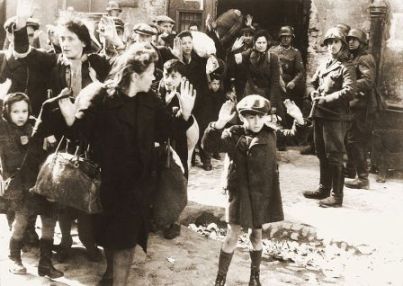
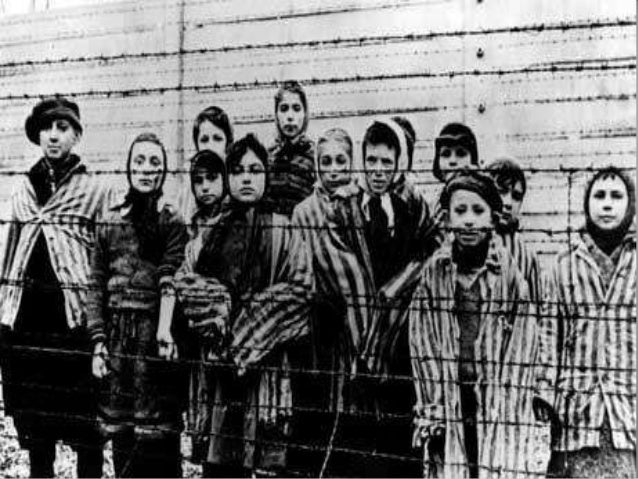
World War II and the Holocaust
During World War II, the Jewish Agency worked to form a Jewish army. They wanted to fight alongside the British forces. Churchill supported the plan. Yet, the British Military and government opposition led to its rejection. The British demanded that the number of Jewish recruits match the number of Arabic recruits. Yet, few Arabic people would fight for Britain. The Palestinian leader or the Mufti of Jerusalem joined the Nazis in Europe. In May of 1941, the Palmach was established to defend the Yishuv against the planned Axis invasion through North Africa. The British refused to provide arms to the Jewish people even when Rommel’s forces were advancing through Egypt in June 1942 (with the intent on occupying Palestine). The 1939 White Paper led to the emergence of a Zionist leadership in Palestine that believed that conflict with Britain was inevitable. Despite this, the Jewish Agency called on Palestine’s Jewish youth to volunteer for the British Army (both men and women).
30,000 Palestinian Jewish people and 6,000 Palestinian Arabic people enlisted in the British armed forces during the Second World War. In June of 1944, the British agreed to create a Jewish Brigade that would fight in Italy. About 1.5 million Jewish people in the world served in every branch of the allied armies. They were mostly in Soviet and U.S. Armies. 200,000 Jewish people died serving in the Soviet army alone. Many of these war veterans later volunteered to fight for Israel or were active in its support. There was a small group of about 200 activists who were dedicated to resist the British administration in Palestine. This group broke away from the Etzel (which advocated support for Britain during the war) and they formed the “Lehi” or the Stern Gang. The Stern Gang was led by Avraham Stern. In 1943, the USSR released the Revisionist Zionist leader Menachem Begin from the Gulag. He went into Palestine and took command of the Etzel organization with a policy of increased conflict against the British. This was the time when Yitzhak Shamir escaped from the camp in Eritrea where the British were holding him.


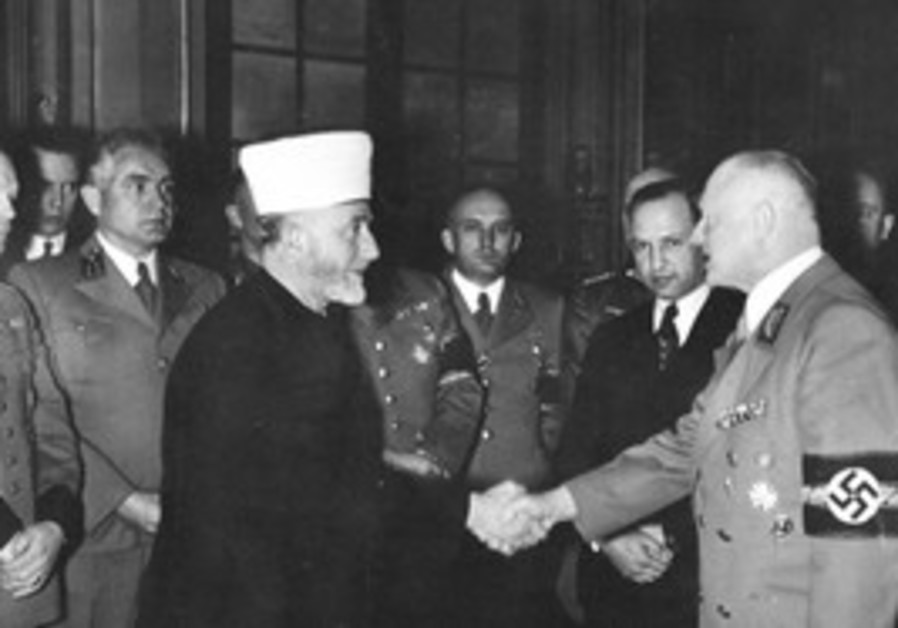
These pictures are self-explanatory. The Nazis were a scourge and their ideologies deserve criticism and a total rebuke. Anyone allying with Nazis back then and today deserves no respect period. The man with the cap on his head working the Nazis is the evil male and anti-Semite Mohammed Amin al-Husseini. He met Hitler on November 28, 1941
Many Lehi activists were held there too without trial. He or Shamir took command of the Lehi or the Stern Gang. Jewish people in the Middle East were also affected by the war. Most of North Africa came under Nazi control and many Jewish people were used as slaves. The 1941 pro-Axis coup in Iraq was accompanied by massacres of Jewish people. The Jewish Agency put together plans for a last stand in the event of Rommel invading Palestine (the Nazis planned to exterminate Palestine's Jewish human beings). Between 1939 and 1945, the Nazis, aided by local forces, led systematic efforts to kill every person of Jewish descent in Europe. The Holocaust caused the deaths of approximately 6 million Jewish people. One quarter of those killed were children. The Polish and German Jewish communities (which played an important role in defining the pre-1945 Jewish world) mostly ceased to exist. In America and Palestine, Jewish people of European origin became disconnected from their families and roots. Sephardi and Mizrahi Jewish people, who had been a minority, became a much more significant factor in the Jewish people. Those Jewish people, who survived central Europe, were displacing persons or refugees. An Anglo-American Committee of Inquiry was formed to examine the Palestine issue. They surveyed the Jewish people’s ambitions and found that over 95% of them wanted to migrate to Palestine. In the Zionist movement, the moderate Pro-British (and British citizen) Chaim Weizmann, who son died flying in the RAF was undermined by Britain’s anti-Zionist policies. Leadership of the movement passed to the Jewish Agency in Palestine. This was led by the anti-British Socialist-Zionist party (Mapai) and led by David Ben-Gurion. In the diaspora, U.S. Jewish people now dominated the Zionist movement.
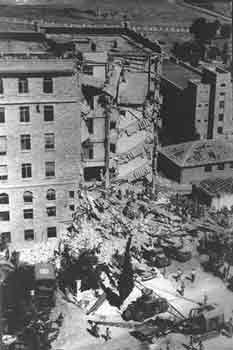
This picture is of the King David Hotel terrorist bombing.
More Immigration
After the Second World War, the British Empire was weakened severely. In the Middle East, the war had made Britain more conscious on its dependence on Arabic nations’ oil. That is why British firms controlled Iraqi oil and Britain ruled Kuwait, Bahrain, and the Emirates. Shortly after VE Day, the Labour Party won the general election in Britain. Although the Labour Party conferences had for years called for the establishment of a Jewish state in Palestine, the Labour government now decided to maintain the 1939 White Paper policies. Undocumented migration into Israel was called Aliyah Bet. It was the main form of Jewish entry into Palestine after WWII. Across Europe Bricha ("flight"), an organization of former partisans and ghetto fighters, smuggled Holocaust survivors from Eastern Europe to Mediterranean ports, where small boats tried to breach the British blockade of Palestine. Meanwhile, Jewish people from Arabic countries began moving into Palestine overland. Despite British efforts to curb immigration, during the 14 years of the Aliyah Bet, over 110,000 Jewish people entered Palestine. By the end of World War II, the Jewish population of Palestine had increased to 33% of the total population. Zionists waged a guerilla war against the British in order for them to get independence. The main underground Jewish militia group called the Haganah did something. They formed an alliance called the Jewish Resistance Movement with Etzel and Stern Gang to fight the British. In June 1946, following instances of Jewish sabotage, the British launched Operation Agatha, arresting 2700 Jewish people, including the leadership of the Jewish Agency, whose headquarters were raided. Those arrested were held without trial.
In Poland, there was the Kieclce Pogrom on July 1946. This led a wave of Holocaust survivors fleeing Europe for Palestine. Between 1945 and 1948, 100,000-120,000 Jewish people left Poland. Their departure was organized largely by Zionist activists in Poland under the umbrella of the semi-clandestine organization Berihah (or “Flight”). Berihah was also responsible for the organized emigration of Jewish people from Romania, Hungary, Czechoslovakia and Yugoslavia, totaling 250,000 (including Poland) Holocaust survivors. The British imprisoned the Jewish people trying to enter Palestine in the Atlit detainee camp and Cyprus internment camps. Those held were mainly Holocaust survivors, including large numbers of children and orphans. In response to Cypriot fears that the Jewish people would never leave (since they lacked a state or documentation) and because the 75,000 quota established by the 1939 White Paper had never been filled, the British allowed the refugees to enter Palestine at a rate of 750 per month.
The unified Jewish resistance movement broke up in July 1946, after Etzel bombed the British Military Headquarters in the King David Hotel killing 91 people. In the days following the bombing, Tel Aviv was placed under curfew and over 120,000 Jewish people, nearly 20% of the Jewish population of Palestine, were questioned by the police. In the U.S., Congress criticized British handling of the situation and delayed loans that were vital to British post-war recovery. By 1947 the Labour Government was ready to refer the Palestine problem to the newly created United Nations.

The United Nations Partition Plan
On April 2, 1947, the United Kingdom requested that the question of Palestine be handled by the General Assembly of the UN. The General Assembly created a committee, United Nations Special Committee on Palestine (UNSCOP) to report on the “question of Palestine.” In July 1947, the UNSCOP visited Palestine and met with Jewish and Zionist delegations. The Arab Higher Committee boycotted the meetings. During the visit, the British Foreign Secretary Ernest Bevin ordered an illegal immigrant ship called the Exodus 1947, to be sent back to Europe. The migrants on the ships were forcibly removed by British troops at Hamburg. The principal non-Zionist Orthodox Jewish (or Haredi) party, Agudat Israel, recommended to UNSCOP that a Jewish state be set up after reaching a religious status quo agreement with Ben-Gurion regarding the future Jewish state. The agreement would grant exemption to a quota of yeshiva (religious seminary) students and to all orthodox women from military service would make the Sabbath the national weekend, promised kosher food in government institutions and would allow them to maintain a separate education system.
The majority report of UNSCOP proposed "an independent Arab State, an independent Jewish State, and the City of Jerusalem" ..., the last to be under "an International Trusteeship System.” On 29 November 1947, in Resolution 181 (II), the General Assembly adopted the majority report of UNSCOP, but with slight modifications. The Plan also called for the British to allow "substantial" Jewish migration by 1 February 1948.
Neither Britain nor the UN Security Council took any action to implement the resolution and Britain continued detaining Jews attempting to enter Palestine. Concerned that partition would severely damage Anglo-Arab relations, Britain denied UN representatives access to Palestine during the period between the adoption of Resolution 181 (II) and the termination of the British Mandate. The British withdrawal was finally completed in May 1948. However, Britain continued to hold Jews of "fighting age" and their families on Cyprus until March 1949.
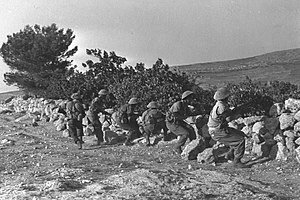

The image on the right shows Arabic refugees traveling into Lebanon.
Civil War (from 1947-1948)
The General Assembly’s voted caused joy in the Jewish community. The Arabic community of course opposed the decision. Violence happened among all sides. Then, the civil war happened. On January 1948, the operations were more militarized with the intervention of a number of Arabic Liberation Army regiments inside Palestine. Each one was active in many sectors around the different coastal towns. They consolidated their presence in Galilee and Samaria. Abd al-Qadir al-Husayni came from Egypt with several hundred men of the Army of the Holy War. Having recruited a few thousand volunteers, he organized the blockade of the 100,000 Jewish residents of Jerusalem. The Yishuv tried to supply the city using convoys of up to 100 armored vehicles, but largely failed. By March, almost all Haganah's armored vehicles had been destroyed, the blockade was in full operation, and hundreds of Haganah members who had tried to bring supplies into the city were killed.
Up to 100,000 Arabs, from the urban upper and middle classes in Haifa, Jaffa and Jerusalem, or Jewish-dominated areas, evacuated abroad or to Arab centres eastwards. This situation caused the U.S. to withdraw their support for the Partition plan, thus encouraging the Arab League to believe that the Palestinian Arabic human beings, reinforced by the Arab Liberation Army, could put an end to the plan for partition. The British, on the other hand, decided on February 7, 1948 to support the annexation of the Arab part of Palestine by Transjordan.
David Ben-Gurion reorganized the Haganah and made conscription obligatory. Every Jewish man and woman in the country had to receive military training. Thanks to funds raised by Golda Meir from sympathizers in the United States, and Stalin's decision to support the Zionist cause, the Jewish representatives of Palestine were able to purchase important arms in Eastern Europe. Ben-Gurion gave Yigael Yadin the responsibility to plan for the announced intervention of the Arabic states. The result of his analysis was Plan Dalet, in which Haganah passed from the defensive to the offensive. The plan sought to establish Jewish territorial continuity by conquering mixed zones. Tiberias, Haifa, Safed, Beisan, Jaffa and Acre fell, resulting in the flight of more than 250,000 Palestinian Arabic people. The situation pushed the leaders of the neighboring Arab states to intervene.

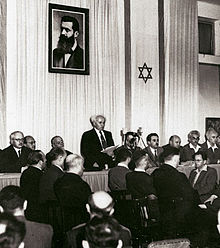
The Start of Modern Day Israel.
On 14 May 1948, on the day the last British forces left from Haifa, the Jewish People's Council gathered at the Tel Aviv Museum and proclaimed the establishment of a Jewish state in Eretz Israel, to be known as the State of Israel. The second part of this series will exist in the Spring of 2018. It will show information about Israel from 1948 to 2018.
By Timothy
No comments:
Post a Comment